| Weight | 1 kg |
|---|---|
| PRESENTACION | |
| PROCEDENCIA |
PIPE DUNHILL BRUYERE GR.3
365,00€ IVA Inc.
Elegant Dunhill Bruyere pipe.
In stock
Additional information
Brand
Brand
DUNHILL
En 1904 Alfred Dunhill inventó la pipa para viento, con la esperanza de luchar contra algunas de las dificultades que se enfrentan los fumadores mientras conducian. Es este tipo de innovación lo que hizo a pipas Dunhill líder en su campo. En 1906, se abrió la primera tienda de tabaco y pipas en Duke St, que pronto llegó a ser conocida por sus mezclas personalizadas . Este es un fiel ejemplo de la increíble capacidad de Dunhill para amoldarse a las necesidades del cliente.
Alfred Dunhill no obstante, estaba tremendamnete disgustado con la calidad de las pipas de entonces, por lo que abrió su propia fábrica en 1910. Implantando dos principios que guía la producción de sus pipas: la primera, las pipas se harán sólo de brezo de la mejor calidad, con gran cuidado por expertos artesanos. La segunda, las pipas podrían tener un precio elevado, para que el cliente reconozca el valor de un producto superior. Esto iba en contra de la tendencia por entonces vigente de pipas de bajo costo y mala calidad.
Las pipas Dunhill se hicieron para toda la vida y siempre con la mirada puesta en la utilidad.
En 1915, se introdujo el famoso punto blanco por practicidad. Con las pipas rectas, los clientes tenían problemas para saber la posición correcta de las boquillas de vulcanita. Por lo tanto, Alfred Dunhill ordenó que se colocan puntos blancos en la parte superior de las boquillas. Esta práctica se convertiría en una solución definitiva de la marca de pipas Dunhill. El "punto blanco" pronto se hizo conocido como un símbolo de calidad.
Alfred Dunhill quería que sus pipas fueran conocidas en todo el mundo. La Primera Guerra Mundial le proporcionó la oportunidad perfecta para promover su producto a escala internacional.
La innovación más revolucionaria de Alfred Dunhill fue la pipa Shell de 1917. Cómo fue que surgió esta técnica de arenado es un misterio. La historia que a menudo se cuenta dice que Alfred Dunhill bajó a su sótano en el invierno para hacer un par de pipas, y sin querer dejó una pieza a medio terminar sobre la caldera de calefacción. Regresó después de haberse acordado de repente de la pipa, sólo para encontrar que algunos de las vetas se habían "encogido", dejando un patrón en relieve.
Alfred Dunhill pasó a abrir tiendas internacionales en Nueva York en 1921 y una tienda en París poco después. La década de 1920 y 30 fueron años de éxito para Dunhill.
El brezo utilizado por Dunhill es cuidadosamente seleccionado. Cada paso en el proceso de seis semanas de duración se realiza a mano. Más de 90 diferentes pasos son necesarios para un proceso que ha cambiado muy poco desde sus primeros tiempos.

DUNHILL
In 1904 Alfred Dunhill invented the wind pipe, hoping to combat some of the difficulties faced by smokers while driving. It is this type of innovation that made Dunhill pipes a leader in their field. In 1906, the first tobacco and pipe store opened on Duke St., which soon became known for its custom blends. This is a true example of Dunhill's incredible ability to adapt to customer needs.
Alfred Dunhill, however, was tremendously dissatisfied with the quality of the pipes at the time, so he opened his own factory in 1910. He implemented two principles guiding the production of his pipes: first, the pipes would be made only from the best quality briar, with great care by skilled craftsmen. Second, the pipes could be priced at a high price, so that the customer would recognize the value of a superior product. This went against the then prevailing trend of low-cost, poor quality pipes.
Dunhill pipes were made for life and always with an eye on utility.
In 1915, the famous white dot was introduced for practicality. With straight pipes, customers had trouble knowing the correct position of the vulcanite mouthpieces. Therefore, Alfred Dunhill ordered white dots to be placed on top of the mouthpieces. This practice would become a definitive solution for the Dunhill brand of pipes. The "white dot" soon became known as a symbol of quality.
Alfred Dunhill wanted his pipes to be known throughout the world. World War I provided him with the perfect opportunity to promote his product on an international scale.
Alfred Dunhill's most revolutionary innovation was the Shell pipe of 1917. How this sandblasting technique came about is a mystery. The story often told is that Alfred Dunhill went down to his basement in the winter to make a couple of pipes, and inadvertently left a half-finished piece on the heating boiler. He returned after suddenly remembering the pipe, only to find that some of the grain had "shrunk," leaving a raised pattern.
Alfred Dunhill went on to open international stores in New York in 1921 and a store in Paris shortly thereafter. The 1920s and 30s were successful years for Dunhill.
The briar used by Dunhill is carefully selected. Each step in the six-week long process is done by hand. More than 90 different steps are necessary for a process that has changed very little since its early days.

Reviews (0)
Only logged in customers who have purchased this product may leave a review.
















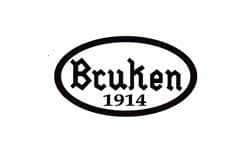








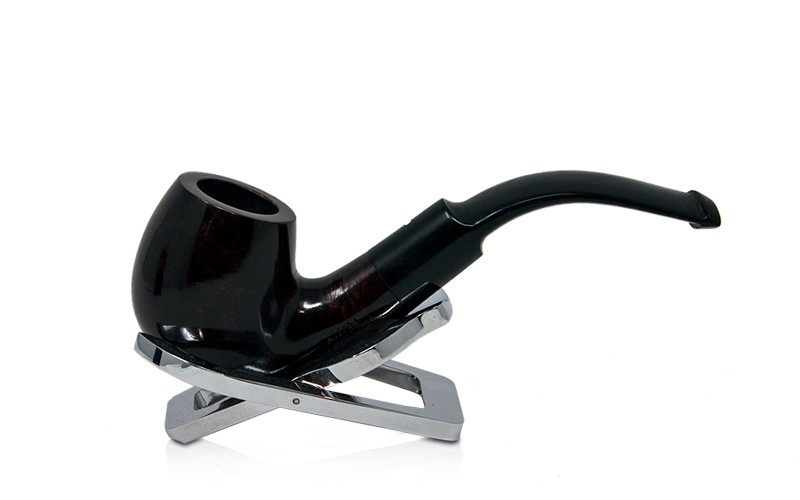

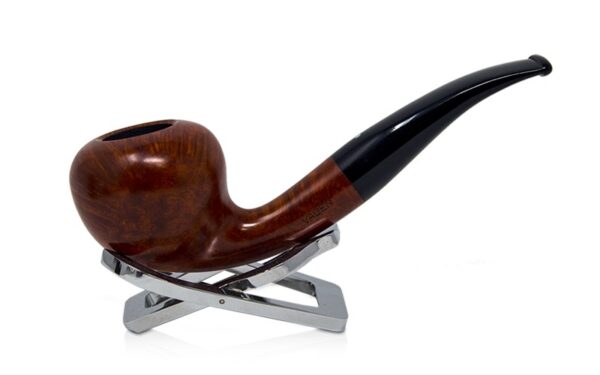

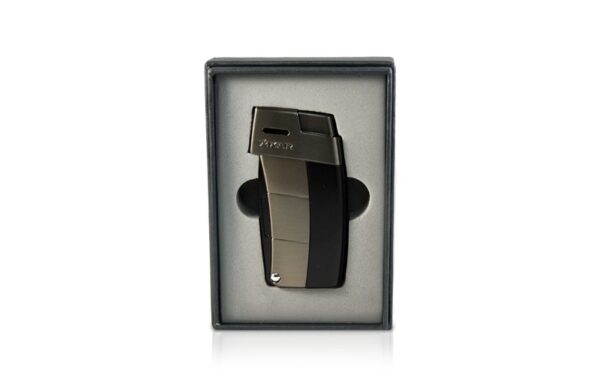
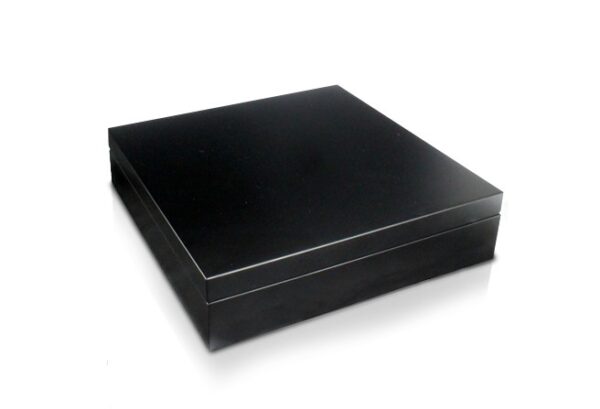
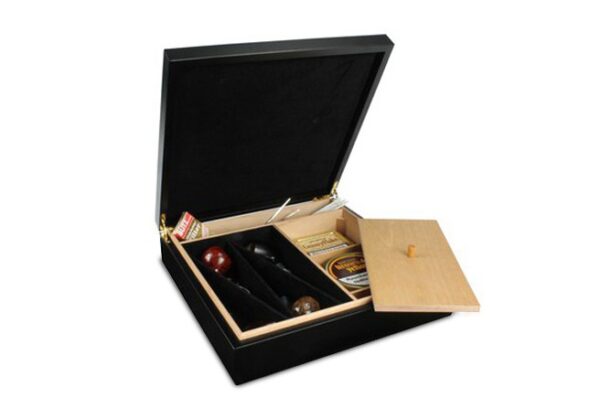
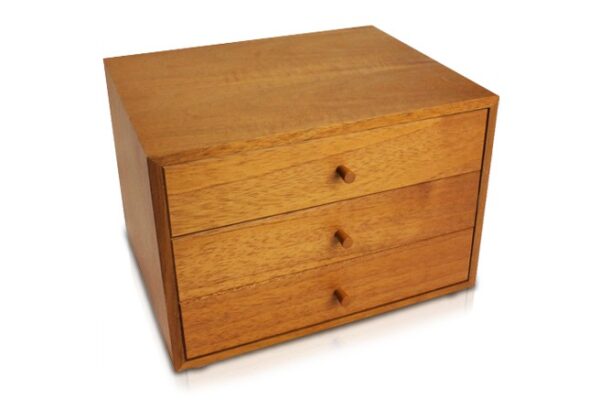
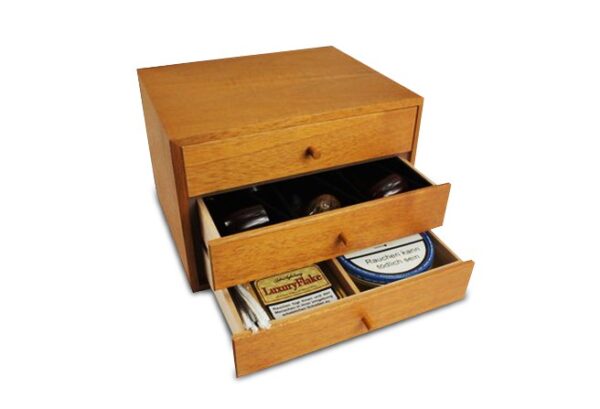


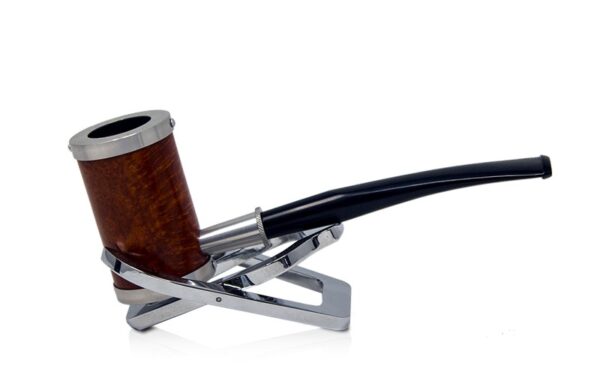

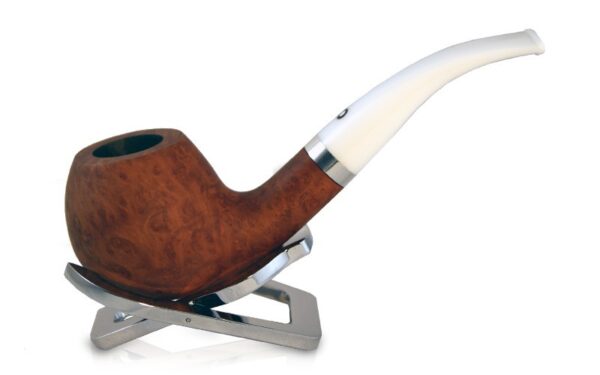

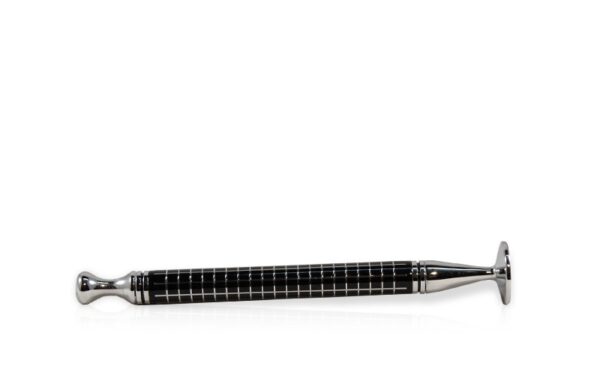

Reviews
There are no reviews yet.